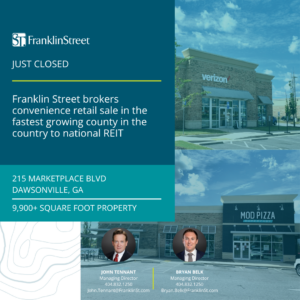…
David Perlleshi, a senior director with Tampa, Florida-based Franklin Street, suggests that e-commerce and inventory management are also demand drivers for self-storage.
“The growth of e-commerce has led small businesses and online retailers to utilize self-storage units for inventory management,” he says. “These units offer a flexible, cost-effective solution for storing stock, especially for businesses operated from home or in need of additional space during peak seasons.”
Self-storage can also be useful for lifestyle and recreational equipment storage, says Frank DeSalvo, a senior director with Franklin Street.
“As people engage in more hobbies and recreational activities, they accumulate equipment that may not be used regularly, such as camping gear, sports equipment or seasonal decorations,” he says. “Self-storage provides a space to store these items safely when they are not in use.”
…
Franklin Street also specializes in converting retail or other industrial buildings into self-storage facilities.
“Conversions are preferred over ground-up development due to their efficiency,” says Perlleshi. “They require less time and are more cost effective. Typically, the process involves adding minimal interior materials such as metal wall dividers and storage doors to the existing structure.”
…
DeSalvo of Franklin Street says that market dynamics vary based on location, macroeconomic conditions, competition and other external variables.
“Rent prices respond to these conditions, fluctuating accordingly,” he says. “On average, absorption rates stand at around 8 square feet per capita. When saturation falls below this threshold, undersupply occurs, driving up rents. Conversely, oversupply can lead to rent decreases.”
DeSalvo explains that the saturation level of a market is measured by the square feet per person — the gross square feet of storage space available per capita within a given area. The gross square footage is calculated by taking all the square footage available within a three- or five-mile radius and dividing it by the population. Typically, a market with a per-capita inventory above the national average is considered oversupplied, while anything below is undersupplied.
…




